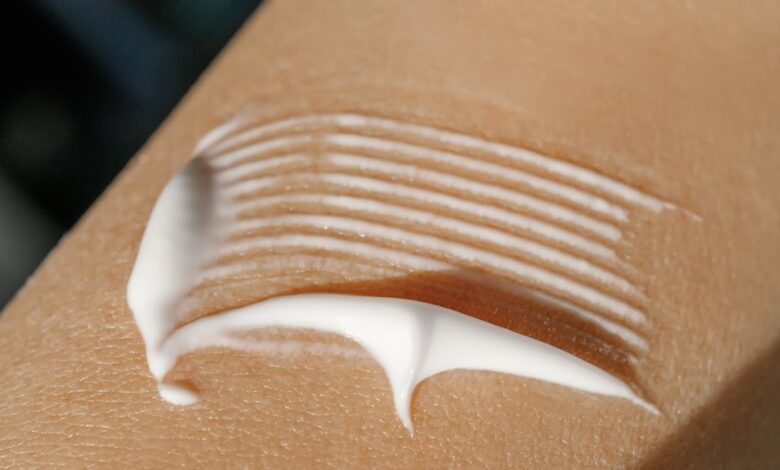How to Choose Skincare Products: A Step-by-Step Guide for Beginners

Photo: Marevgenna
Stepping into the world of skincare can feel a bit overwhelming. With so many influencers promoting their lines and countless products promising miraculous results, it’s easy to get lost. Especially if you’re unfamiliar with terms like ‘serum,’ or don’t understand how cleansers can contain sulfur, or why an anti-wrinkle cream might cause dryness.
But don’t worry! This guide is designed for absolute beginners. It will help you start your journey towards a healthier, naturally glowing complexion, even if you’ve never understood your skin before. Let’s demystify skincare together, one gentle step at a time.
Choosing Skincare Products: Where to Start?
Of course, before diving headfirst into the vast skincare ocean, it is important to create a plan. The initial step of your plan won’t be about chasing trends or miracle ingredients; it must be about building a foundation of self-awareness.
Step #1. Evaluate Your Current Skin Condition:
Begin by observing your skin’s behavior throughout the day: does it feel tight or oily? Are there areas prone to redness or breakouts? This quiet observation, coupled with a bit of research on skin types and their characteristics, will provide the compass you need to navigate the often confusing world of skincare. Understanding your skin’s unique needs is the crucial first step, ensuring that the products you eventually choose will work with your skin, not against it.
Step #2. Consult with Dermatologists:
Of course, before you drop a ton of cash on skincare, it’s seriously worth chatting with a dermatologist. They’re the pros who can actually tell you what your skin really needs. Instead of guessing and maybe wasting money on stuff that doesn’t work, they’ll give you personalized advice. This will surely save you from irritation, redness, and wasted money.
Step #3. Address Current (and Future) Skin Concerns:
Building an effective skincare routine isn’t just about addressing your immediate concerns; it’s about proactively safeguarding your skin’s future health. By carefully selecting products with targeted ingredients, you can tackle existing issues like dryness or blemishes while laying the groundwork for long-term resilience.
For instance, incorporating antioxidants can combat environmental damage and slow down premature aging, while consistent hydration strengthens the skin’s barrier, preventing future sensitivity. So, it is always best to consider your current skin’s needs just as a starting point, but always look ahead, choosing products that offer lasting protection.
Photo: Cultura Creative
Step #4. Set Up a Budget:
Now, it’s time to create a budget. I recommend you begin your skincare journey with more affordable, starter-friendly products. There’s a good chance you’ll need to adjust and try various options before finally settling on what works best for you.
Start by assessing your current routine and identifying essential products versus those that are more of a luxury. What products do you lack? What products and tools must be replaced or thrown away? Dermatologist Shereene Idriss in her video “Beauty Products We Do NOT Need” shares her list of skincare, we don’t actually need. For example, a dedicated hyaluronic acid serum might seem like a must-have, but you don’t necessarily need to spend extra money on it, as hyaluronic acid is often included in other products. And mechanical scrubs? It’s generally best to avoid those, as they can cause skin damage and sensitivity, making them a poor investment. And, so on!
- Research dupes and alternatives:
Okay, so next, look for cheaper but still effective options for the products you really need. Check out drugstore brands that people actually recommend. Identify the active ingredient that targets your specific concerns, and then look for that ingredient in the dupe’s ingredient list. Just make sure to follow your dermatologist’s recommendations regarding the percentage of that active ingredient. This is crucial.
Decide on a set amount of money you’re gonna spend on skincare each month – think of it as taking care of yourself. Maybe put most of that cash towards the basics, like face wash, moisturizer, and sunscreen, and then save a little bit for those extra things you want sometimes, like special serums or masks.
Step #5. Check Ingredient List
So, those ingredient lists? They might look intimidating, but they’re actually pretty simple. Basically, the stuff at the top is what the product has the most of. So, if you’re looking for, say, vitamin C toner, see where it falls on the list. If it’s way down at the bottom, there might not be much of it.
And yeah, those long, weird chemical names? It’s worth a quick Google search to see what they actually do. Also, if you know you’re sensitive to certain things, like fragrances, keep an eye out for those. Once you get the hang of it, reading ingredient lists means you can pick products that actually work for you, and avoid the ones that might cause problems.
- Consider your lifestyle and ethical views:
Think about where your stuff comes from and what the companies are actually doing. Try to find brands that don’t test on animals, that’s a big one for a lot of people. And look into companies that care about the planet, you know, using better packaging and stuff. If you’re into supporting fair treatment of workers, check if they’re doing that too. Basically, just make sure your skincare matches what you believe in.
Step #6. Do a Patch Test
Before slathering any new skincare product across your face and neck, a simple patch test can save you from a potential skin disaster. This involves applying a small amount of the product to a discreet area, like the inside of your wrist or behind your ear, and waiting 24-48 hours to observe any adverse reactions. Look for redness, itching, burning, or any other signs of irritation. This seemingly minor step is crucial, as it allows you to identify potential allergens or irritants before they cause widespread discomfort or damage.
Step #7. Create a Simple Routine
Building your ultimate skincare routine doesn’t require a complex, multi-step process from the start. Begin with the essentials: a very gentle cleanser, a basic moisturizer, and daily sunscreen. This simple foundation allows you to observe how your skin reacts and provides a clear baseline for future additions.
Over time, as you become more familiar with your skin’s needs, you can gradually introduce more specific, targeted treatments, like brightening serums or acid exfoliants, one at a time. Remember to follow your dermatologist’s recommendations and stay consistent: this will yield better long-term results than a rushed, overwhelming g approach.
Final Thoughts…
Hopefully, with this little guide as your starting point, you’re now equipped to make informed decisions about your skincare. Don’t forget to begin by identifying your skin type, then gradually introduce new products, one at a time. Keep a simple log of your routine and how your skin reacts. Consistency is the key point here! Happy skin caring!
https://blogger.googleusercontent.com/img/b/R29vZ2xl/AVvXsEg9It4pps50PuzQmNP47NAdUSPaFBRA4CM_OWGKz_d89USiQOpErQtexnMAJLi7a0n8B65q0SeRAlNz4wGQeODXchFTb_JVTqvjdYw4citPOjX7hyteFpisvOAum9hMM7cH4_aTdFlXetX1pDJg7BnRjDXtDX3c2fC7oAokjpfoOVkYVzZ_3i-gLg6YvEaT/w1200-h630-p-k-no-nu/AdobeStock_469832436.jpeg
2025-03-30 22:30:00







